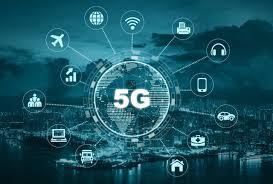5G technology represents a significant leap forward in telecommunications, promising faster speeds, lower latency, and greater connectivity, revolutionizing industries, consumer experiences, and digital transformation. This article explores the applications, benefits, challenges, and future trends of 5G technology, highlighting its transformative impact on global connectivity and technological innovation.
Applications of 5G Technology
- Enhanced Mobile Connectivity: 5G networks deliver significantly faster download and upload speeds, enabling seamless streaming, high-definition video conferencing, and real-time mobile gaming experiences on smartphones and other connected devices.
- Internet of Things (IoT) Integration: 5G supports a massive number of IoT devices with low latency and high reliability, facilitating smart city initiatives, industrial automation, and connected healthcare applications that require instantaneous data transmission and response times.
Benefits of 5G Technology
- High-Speed Data Transmission: 5G networks offer multi-gigabit speeds, reducing download times and enabling bandwidth-intensive applications such as virtual reality (VR), augmented reality (AR), and ultra-high-definition video streaming without buffering.
- Low Latency and Real-Time Connectivity: Ultra-low latency in 5G networks enables real-time communication and interaction across devices, critical for autonomous vehicles, remote surgery, and mission-critical industrial operations that require instantaneous data exchange.
Challenges and Considerations
- Infrastructure Deployment: Deploying 5G infrastructure, including small cells, millimeter-wave spectrum, and fiber optic networks, requires significant investments in network expansion, regulatory approvals, and overcoming logistical challenges in urban and rural areas.
- Security and Privacy Concerns: Addressing cybersecurity threats, protecting user data privacy, and implementing robust encryption protocols are essential to build trust and ensure secure communication across 5G networks and connected devices.
Impact on Industries and Innovation
- Telecommunications and Mobile Services: 5G enables telecom operators to offer enhanced services, such as fixed wireless access (FWA), network slicing for tailored service delivery, and advanced mobile broadband connectivity, enhancing user experiences and customer satisfaction.
- Industry 4.0 and Smart Manufacturing: 5G supports the deployment of smart factories with real-time monitoring, predictive maintenance, and autonomous production processes, optimizing operational efficiency, reducing downtime, and accelerating digital transformation.
Future Trends in 5G Technology
- Edge Computing Integration: Integration of 5G with edge computing technologies decentralizes data processing, reduces latency for edge devices, and supports low-latency applications (e.g., IoT devices, autonomous vehicles) that require real-time decision-making capabilities.
- 5G Beyond Consumer Applications: Expansion of 5G into new use cases, including smart grid management, remote education, telemedicine, and public safety applications, demonstrates its potential to drive innovation, economic growth, and societal benefits globally.
Conclusion
5G technology is poised to redefine connectivity standards, unlock new possibilities for innovation, and transform industries by enabling faster speeds, lower latency, and ubiquitous connectivity. As global adoption of 5G accelerates, addressing infrastructure deployment challenges, cybersecurity risks, and regulatory frameworks will be crucial to harnessing its full potential. By embracing 5G technology, businesses, governments, and consumers can capitalize on its transformative capabilities to drive digital innovation, enhance productivity, and improve quality of life in an increasingly interconnected world.
